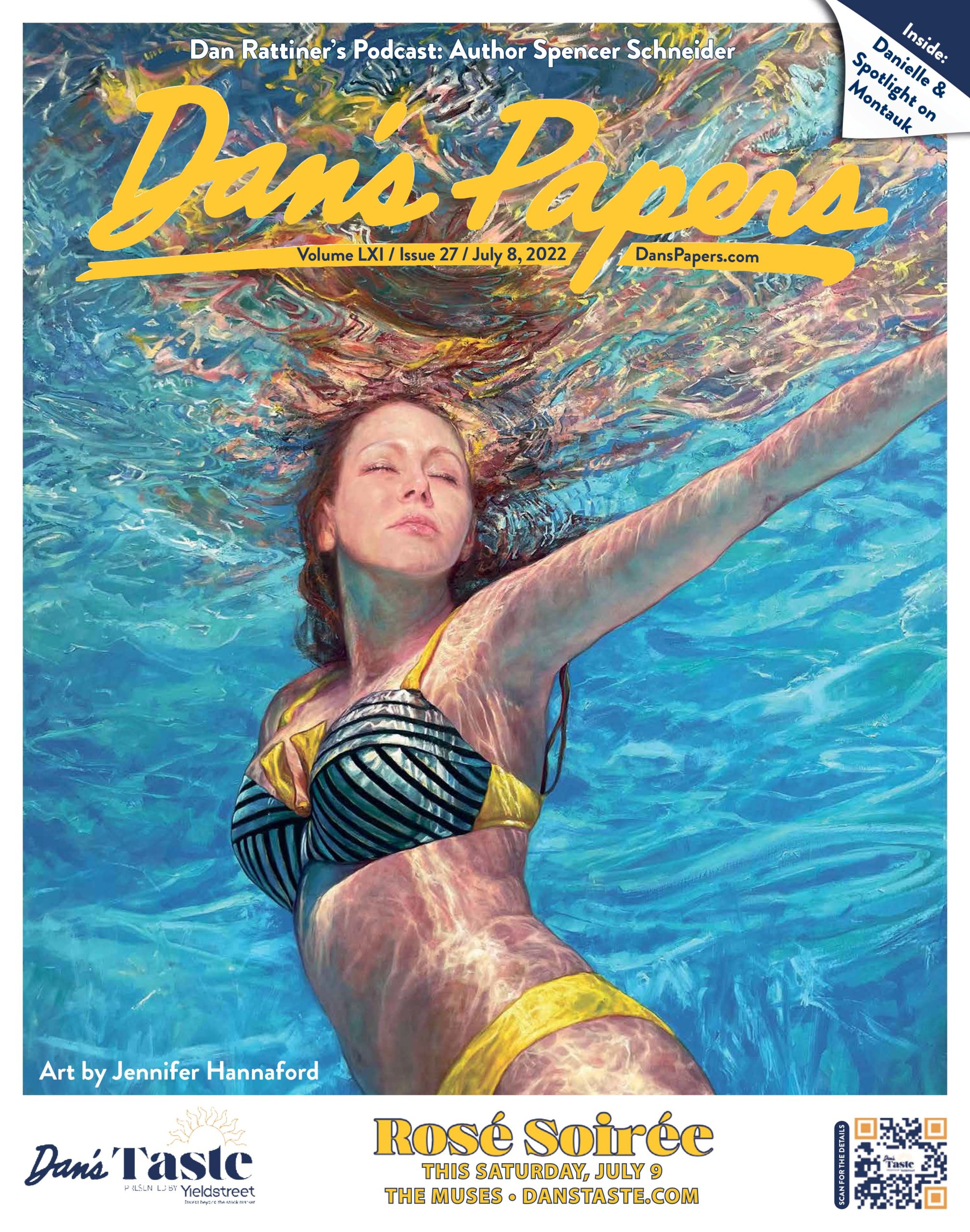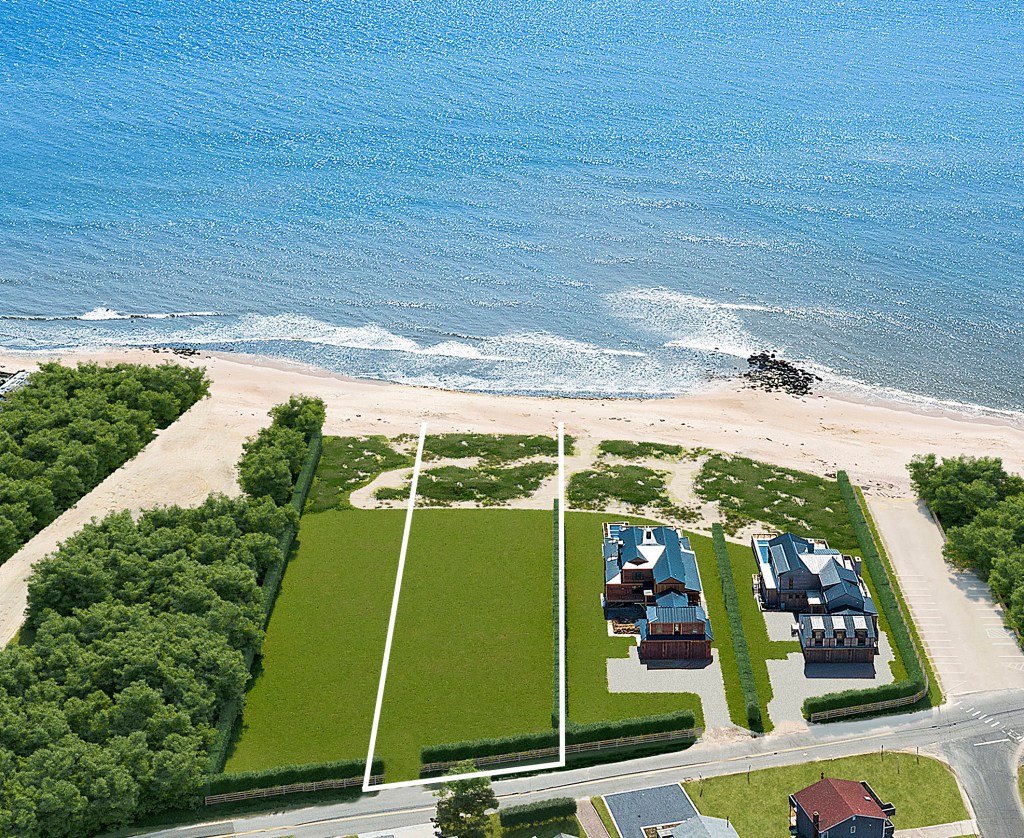Dan's Cover Artist Jennifer Hannaford: From Photoshoot to Painting
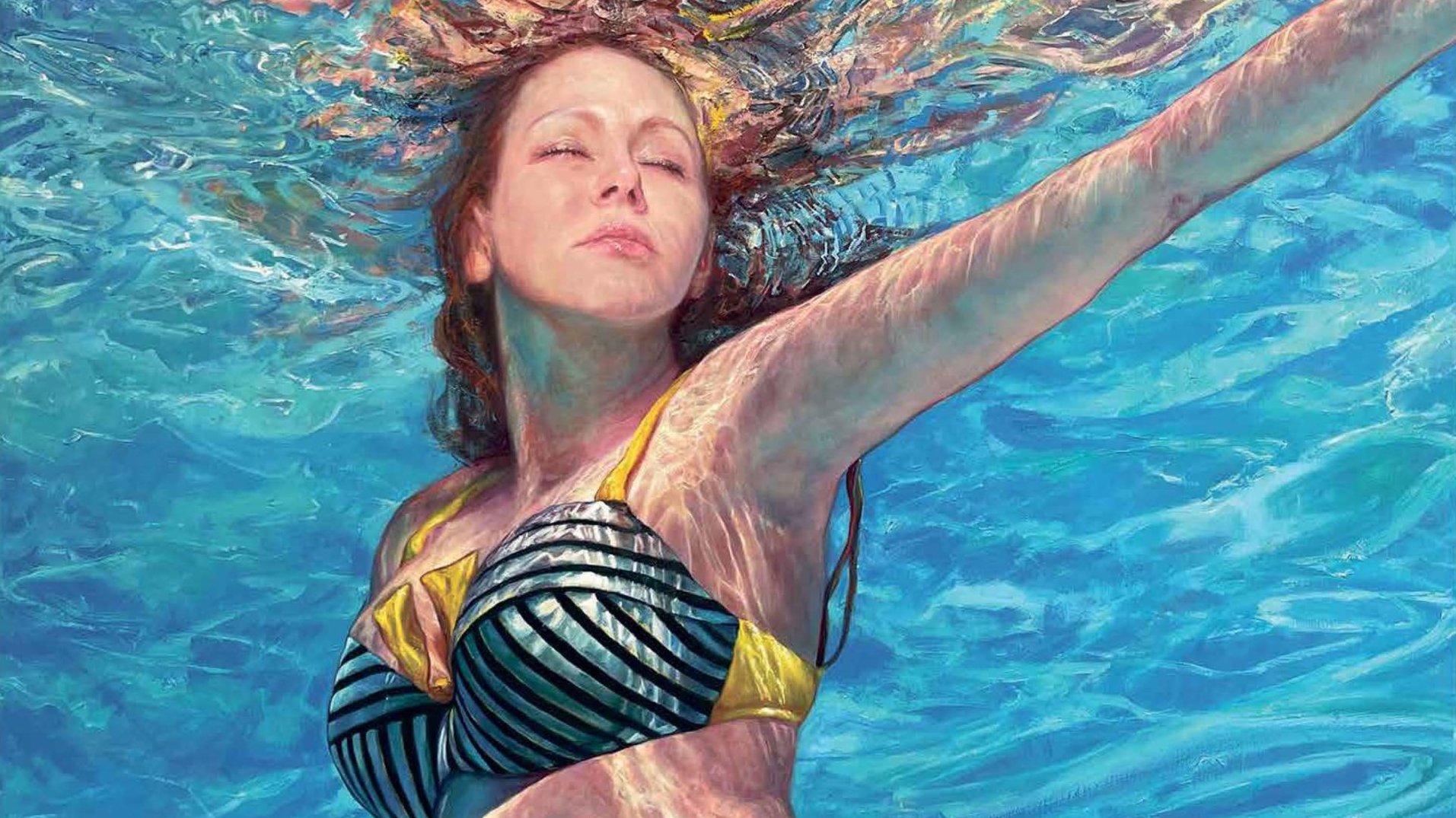
This week’s stunning cover art comes to us from Jennifer Hannaford, known across the island and beyond for her mesmerizing paintings of underwater swimmers. Here she discusses her long creative process from photoshoot to painting, connecting with clients and encouraging others to pick up a brush and paint.
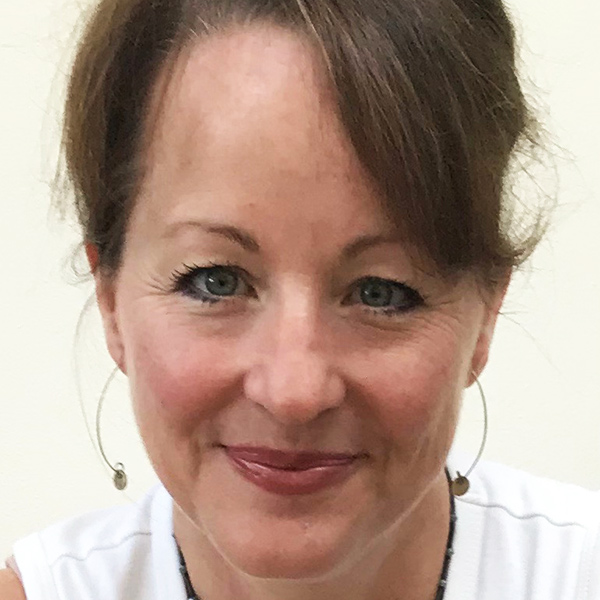
A Chat with Jennifer Hannaford
Tell us about the inspiration/commission that led to the creation of “Bloom” and the underwater photoshoot that followed.
“Bloom” is a commissioned piece created for a lovely couple in the Hamptons. I was discovered by them through a previous feature in Dan’s Papers. The clients were interested in an earlier work I had painted, but it had gone to another collector. We discussed doing a custom underwater photoshoot.
I told them I could paint a custom underwater portrait, and that is how Svetlana Poly’s husband convinced her to pose underwater. With my photographer, Miles Hannaford, we returned to their pool for a personal photoshoot a few weeks later.
How did you select which photo to paint, and did you alter the composition, lighting or other details to get the painted version just right?
We designed the photoshoot with a specific composition in mind. Even with thorough preparation, not everything always goes as planned. Miles and I can take hundreds or thousands of photos for a shoot, but sometimes, only a few of the photos will translate well to a painting.
In this case, the final composition comprises several photos. I must use the photos for reference to get the subject right, but I then prefer to depart from photos to allow my own artistic choices to take hold.
Perhaps I see the eye glint or facial expression in one photo. In another, perhaps the background light or waterplay more delightfully expresses the mood I wish to convey. These are the actions that allow my work to flow in a creative direction.
How long did this particular piece take you to paint, and what did your process look like in terms of materials used, brushstroke techniques and the like?
“Bloom” took over four months to paint. The piece is a 48” x 60” oil on linen. I start with a rough full-sized sketch of my subject and begin to build layers over the sketch. I prefer to activate the surface with expressive brushwork. Sometimes my work does not involve a brush at all.
I work the paint and surface with my hands and a variety of other tools. Previous layers are scraped down and built up again, allowing patterns and color to show through. This is most apparent in the reflecting surface of the water.
My paintings tend to move towards abstract or impressionistic interpretations of the water experience. My goal is not to just recreate a photo on a canvas with paint. I wish to convey the likeness of my subject where all or just a portion of the canvas allows for interesting moments of observation on their own.
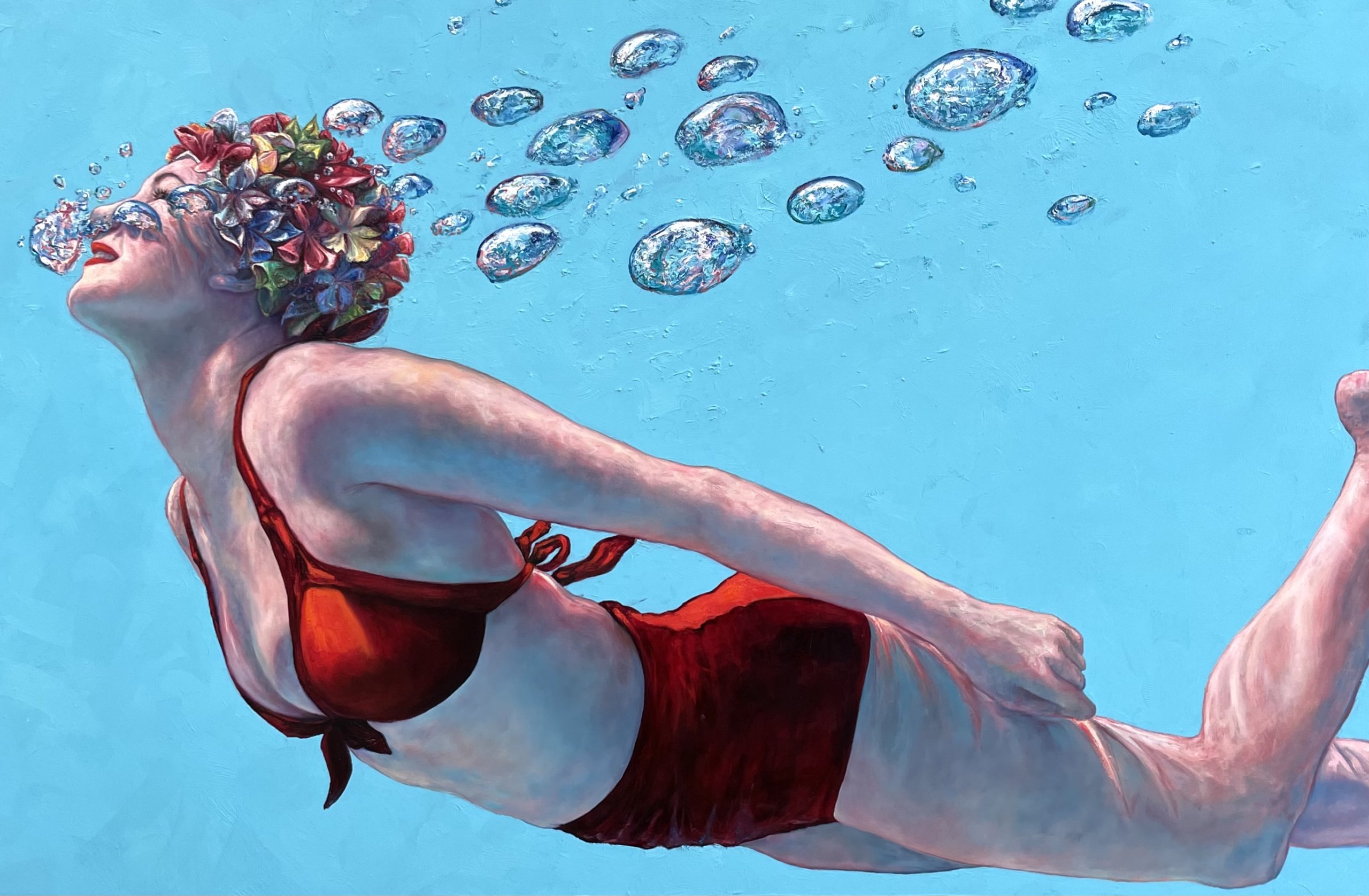
How does your creative process change during the summer?
Summer is a time for me to travel to water destinations. I am starting to amass a collection of images with which I will be creating a new series.
Summer is also when I am booked for photoshoots with clients (human and pets). We conduct these sessions in my pool in Port Jefferson, or travel to my clients.
These commissions keep me busy in the cold months. I can often be found in my studio during the winter bundled up in a hat and scarf painting these happy swimmers celebrating the sun and water.
What artistic accomplishment are you most proud of?
One of the most exciting projects I was involved with was early on in my painting career, and at the time was my largest commission. I was hired by Walton Architecture and Engineering to paint a triptych of swimmers for a permanent installation in the Ritz-Carlton’s Lake Club on the North shore of Lake Tahoe.
However, today, I am most excited about something that is before me. A wonderful couple in California has commissioned five large works of their grandchildren. I went to California for the photoshoot, and really connected with my client who is someone I now call a friend.
When someone relates so well with my work and gives me the privilege of painting their beloved family members, it is a tremendous honor.
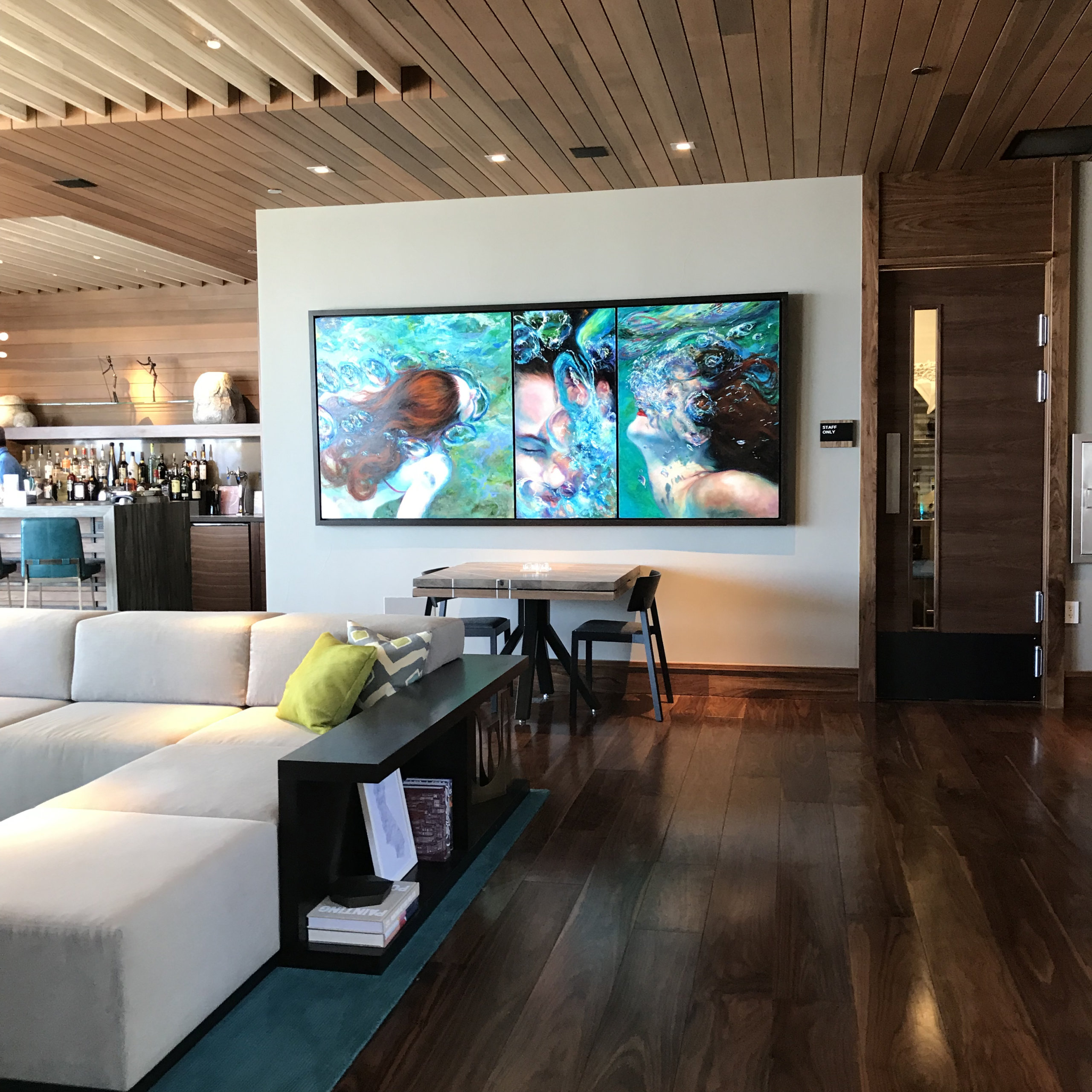
What do you find most rewarding about being an artist?
Six months ago, I rented my first private studio. It is large, it is quiet, and I can make a mess. As an artist, with this new step, I have been rewarded with freedom and a lot more useful time. It goes without saying, I appreciate getting to work on something I am passionate about.
Yet, after decades of work in some pretty stressful job environments that were not art related, I am enjoying calling the shots, goals without boundaries, and having the power to shape my work environment and time.
I work every bit as diligently as I used to, but I am free of protocols, expected outcomes, and in most cases, difficult deadlines. It has allowed my career and personal growth to expand in ways that I could have never predicted.
Would you like to share any closing thoughts or additional information?
I would like to share that I started painting in my 40s. I often have folks come to me and express that they cannot draw a straight line, but wish they could dabble in art. Here is the great thing about art, you do not have to draw a straight line! Even better, make those lines expressive. You just have to show up. Your art does not have to be created for anyone else, for the purpose of selling or for others to critique.
It does not matter. If you have a vision or a desire to create, just find your medium and dive in. It’s never too late. I promise you, your curiosity and courage to explore your creative side will reward you.
To view more of Hannaford’s work, visit jenniferhannaford.com.
